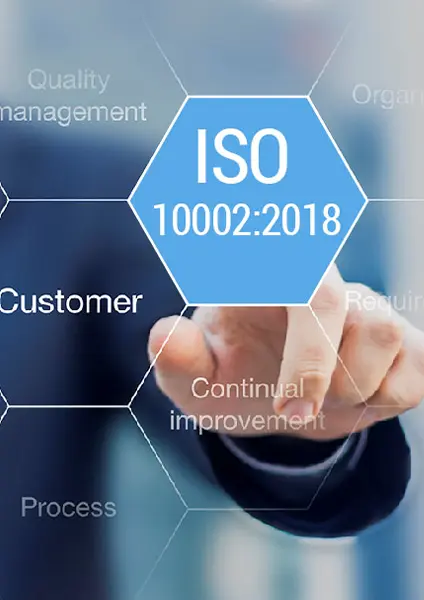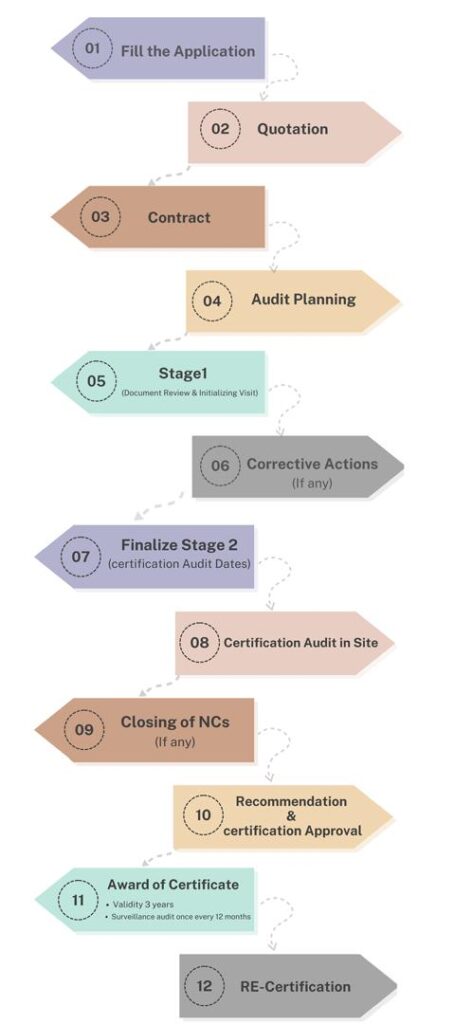Customer satisfaction is the cornerstone of any successful business. However, even the most customer-focused organizations occasionally face complaints. This is where ISO 10002:2018, the international standard for complaint handling, comes into play. Designed to help organizations effectively address customer grievances, this standard ensures customer loyalty, enhances organizational reputation, and fosters continuous improvement.
In this comprehensive guide, we’ll explore the key aspects of ISO 10002:2018, its benefits, implementation process, and practical tips to make complaint management a strategic advantage for your business.
What Is ISO 10002:2018?
ISO 10002:2018 provides guidelines for establishing an effective complaint management system (CMS). It helps organizations design and implement processes to handle customer complaints in a systematic, transparent, and efficient manner. While it’s not a certifiable standard, ISO 10002 is often integrated with other management systems, such as ISO 9001, to strengthen overall quality management.

Why Is ISO 10002:2018 Important?
Handling complaints effectively is crucial for building trust and retaining customers. Ignored or mishandled complaints can lead to customer dissatisfaction, negative reviews, and reputational damage. ISO 10002:2018 helps organizations turn complaints into opportunities by addressing them professionally and identifying areas for improvement.
Benefits of ISO 10002:2018
- Enhanced Customer Satisfaction Effective complaint management demonstrates that your organization values customer feedback, fostering loyalty and trust.
- Improved Business Processes Analyzing complaints provides insights into recurring issues, allowing you to address root causes and improve products or services.
- Stronger Reputation Organizations known for resolving complaints efficiently gain a competitive edge and build a positive brand image.
- Compliance with Standards Adopting ISO 10002:2018 ensures compliance with regulatory and industry requirements related to customer interactions.
- Cost Savings Resolving complaints promptly reduces the likelihood of escalations, legal disputes, and lost customers.
Key Principles of ISO 10002:2018
ISO 10002:2018 is built on several core principles to guide organizations in complaint handling:
- Visibility: Customers should know how and where to submit complaints.
- Accessibility: Ensure the complaint process is easy to access for all customers.
- Responsiveness: Acknowledge and address complaints promptly.
- Objectivity: Handle complaints impartially, ensuring fair outcomes.
- Confidentiality: Protect customer information throughout the complaint process.
- Customer-Focused Approach: Prioritize customer needs and satisfaction in resolving complaints.
- Accountability: Assign responsibility for complaint handling at appropriate levels within the organization.
Steps to Implement ISO 10002:2018
- Understand the Standard
Familiarize yourself with ISO 10002:2018 guidelines and how they align with your organization’s goals. Consider engaging an ISO consultant or training team for deeper insights.
- Develop a Complaint Management Policy
Create a formal policy outlining your organization’s commitment to handling complaints effectively. Include the scope, objectives, and responsibilities.
- Design the Complaint Process
Establish a clear, step-by-step process for:
- Receiving complaints
- Recording and categorizing complaints
- Investigating issues
- Resolving and communicating outcomes
- Train Employees
Educate your team about the importance of complaint management and their roles in ensuring its success. Provide training on communication, problem-solving, and conflict resolution.
- Implement a Feedback Loop
Encourage customer feedback and use complaints as a source of continuous improvement. Analyze complaint trends to identify systemic issues and address them proactively.
- Monitor and Evaluate
Regularly assess your CMS through audits, performance metrics, and customer satisfaction surveys. Adjust processes as needed to enhance effectiveness.
Examples of ISO 10002:2018 in Action
Case Study: Retail Sector
A leading retail chain adopted ISO 10002:2018 to improve its complaint handling. By implementing a centralized CMS, they reduced response times from 5 days to 24 hours, leading to a 30% increase in customer satisfaction and a 20% reduction in negative reviews.
Case Study: Healthcare
A hospital used ISO 10002:2018 to address patient complaints more effectively. They established a transparent process, trained staff, and introduced an online portal for feedback. As a result, patient trust increased, and recurring complaints dropped significantly.
Practical Tips for ISO 10002:2018 Implementation
- Leverage Technology Use CRM software to automate complaint tracking, categorize issues, and generate reports for analysis.
- Encourage Customer Feedback Actively solicit feedback through surveys, hotlines, or online platforms. Make it easy for customers to voice concerns.
- Empower Employees Equip frontline staff with the authority to resolve complaints quickly, minimizing delays and customer frustration.
- Focus on Communication Keep customers informed throughout the complaint resolution process. Clear, transparent communication builds trust.
- Use Metrics Measure key performance indicators (KPIs), such as resolution time, complaint volume, and customer satisfaction, to evaluate CMS effectiveness.
Challenges in Implementing ISO 10002:2018
- Resistance to Change
Employees may resist new processes. Overcome this by emphasizing the benefits of effective complaint management.
- Resource Constraints
Allocating sufficient resources for training, technology, and process development can be challenging. Start small and scale up as needed.
- Consistency Across Channels
Ensure complaint handling is uniform across all customer touchpoints, including in-person, phone, and digital platforms.
Conclusion
ISO 10002:2018 is an invaluable framework for organizations looking to enhance customer satisfaction and build a reputation for reliability. By establishing a robust complaint management system, you can turn grievances into opportunities, foster loyalty, and achieve long-term success.
Implementing ISO 10002:2018 doesn’t just resolve complaints—it transforms them into insights that drive continual improvement and customer satisfaction. Start your journey today and make effective complaint management a cornerstone of your business strategy.
Certification Process
1- Completion of information related to the company name, company activities, the number of staff per work shift, website address, and branches.
2- Announcement of costs related to the requested certification issuance process.
3- Preparation and approval of the contract for implementation.
4- Planning the audit process and notifying the client for audit process.
5- reviewing documents to identify the client strengths and weaknesses in comparison to the established documentation.
6- Corrective actions for potential weaknesses.
7- Final planning for conducting the audit, registration, and certification issuance.
8- Conducting the on-site audit process at the client by the specialized team of the certifying company.
9- Corrective actions for potential weaknesses in the execution of the organization’s processes.
10- Recommendation for the issuance of a certification related to the client to the head office.
11- Achieving the related certification.
12- Renew after three years.


